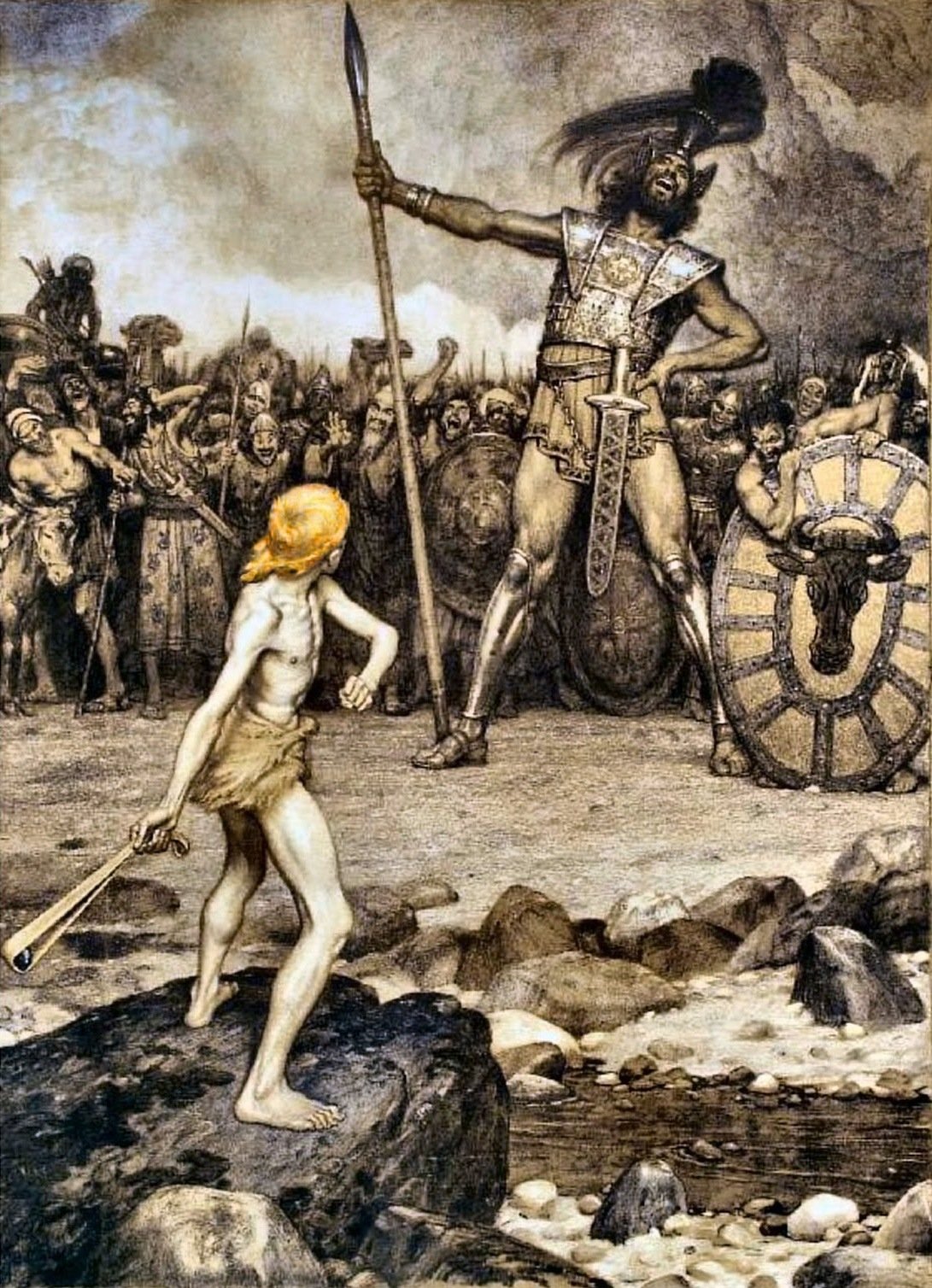
Ancient Palestine has been the site of numerous wars for thousands of years. In the Late Bronze Age and Early Iron Age, it was the site of wars between the Philistines and the Israelites. Many of these wars are recorded in the Bible. However, there is also some support for them from independent sources, such as Assyrian records. What do we know about these wars between the Israelites and the Philistines?
Samson’s war against the Philistines
One notable character from the Bible was Samson. This Israelite was famously strong, due to his vow to God involving leaving his hair long and not cutting it. According to the Bible Book of Judges, which relates events between the 15th and the 12th centuries BCE, Samson fought numerous battles against the Philistines. Samson appears to have lived near the end of the period covered by the Book of Judges, placing him probably in the 13th or 12th century.
Samson’s battles against the Philistines were not conventional ones. Due to his incredible strength, he did not need an army of Israelites. He single-handedly fought against large groups of Philistines. Perhaps the most notable occasion was when he took the jawbone of a donkey and used it to kill 1000 Philistine soldiers.
Samson does not appear in any extra-Biblical source from ancient times. Therefore, scholars debate his existence. However, it is notable that a seal was found in ancient Israel which appears to depict a man and a lion. It dates from the 12th century BCE and was found near Samson’s home territory. Due to the similarity between this and the famous story of Samson killing a lion, some scholars take it as evidence that he really existed and that his battles against the Philistines may have really happened.
The Philistine Capture of the Ark of the Covenant
The next most notable interaction between the Philistines and the Israelites occurred later in the 12th century BCE. Based on archaeological and written evidence, we know that there was another wave of Philistine arrivals in Palestine during this century. Perhaps this led to the subsequent increased intensities between the Israelites and Philistines that we find in the Bible.
In the area of Aphek and Ebenezer, the Philistines killed four thousand Israelites. Interestingly, archaeologists have found Philistine pottery at Aphek (modern-day Tel Afek). This pottery dates to the Early Iron Age. Archaeologists have also found what appears to be an Israelite village just next to Aphek. This was destroyed around 1050 BCE. Although the dates do not perfectly line up, this destruction layer may well correspond to this Biblical battle.
The Israelites responded by bringing the sacred Ark of the Covenant to the battlefield. This backfired immensely. Many more thousands of Israelites died, and the Philistines captured the Ark. They held onto it for seven months before the Israelites finally got it back.

Goliath the Philistine
In the late 12th century, the Israelites became a monarchy, with King Saul ruling over them. The Philistines had grown very powerful over the Israelites by this time. When Saul became king, he quickly engaged in war against them. Initially, Saul was very successful. However, the Philistines still had a strong presence in the land.
Shortly after Saul’s initial victory, the Philistines brought their army to meet the Israelites at the Valley of Elah. In line with their Aegean background, they chose a strong warrior to engage in single combat with the best Israelite warrior. The Philistine soldier was a man named Goliath.
Famously, a teenager named David had the courage to go and face Goliath. He used his sling to strike Goliath in the forehead with a stone. The Israelites then pursued the fleeing Philistines back to their own territories on the coast. Saul, and later David, continued warring against the Philistines for years thereafter.
Interestingly, archaeologists found an inscription from the Philistine city of Gath, the home of Goliath, dating to around 1000 BCE. This inscription, called the Tell es-Safi inscription, contains two personal names. They are spelled ‘LWT’ and ‘WLT’ (this form of writing did not use vowels). Many scholars have suggested a connection between this inscription and Goliath, whose name was written as ‘GLYT’ in the Bible.
Hezekiah’s War Against the Philistines
The Israelites engaged in sporadic warfare against the Philistines over the centuries. As far as the Biblical record is concerned, the final war between those two nations occurred in the time of King Hezekiah. He was a powerful and prominent king of the Two-Tribe Kingdom of Judah in the eighth century BCE. The Bible describes his reign in extensive detail, and he also appears in Assyrian records.
In the Bible Book of Isaiah, there is a prophecy from the year of the death of King Ahaz, Hezekiah’s father. It served as a warning to the Philistines that their retribution was coming. In the account of Hezekiah’s life, the Bible explains that he ‘defeated the Philistines clear to Gaza and its territories, from watchtower to fortified city.’
Interestingly, there is extra-Biblical support for this war between the Israelites and the Philistines. The ancient annals of King Sennacherib of Assyria indicate that the Philistines were subject to Hezekiah. According to these, the people of Ekron, a Philistine city, had handed over their king, Padi, to Hezekiah.
Hezekiah held King Padi in prison until King Sennacherib compelled Hezekiah to release him during his siege of Jerusalem. This appears to have been the end of direct warfare between the Israelites and the Philistines.
See all the latest news from Greece and the world at Greekreporter.com. Contact our newsroom to report an update or send your story, photos and videos. Follow GR on Google News and subscribe here to our daily email!



